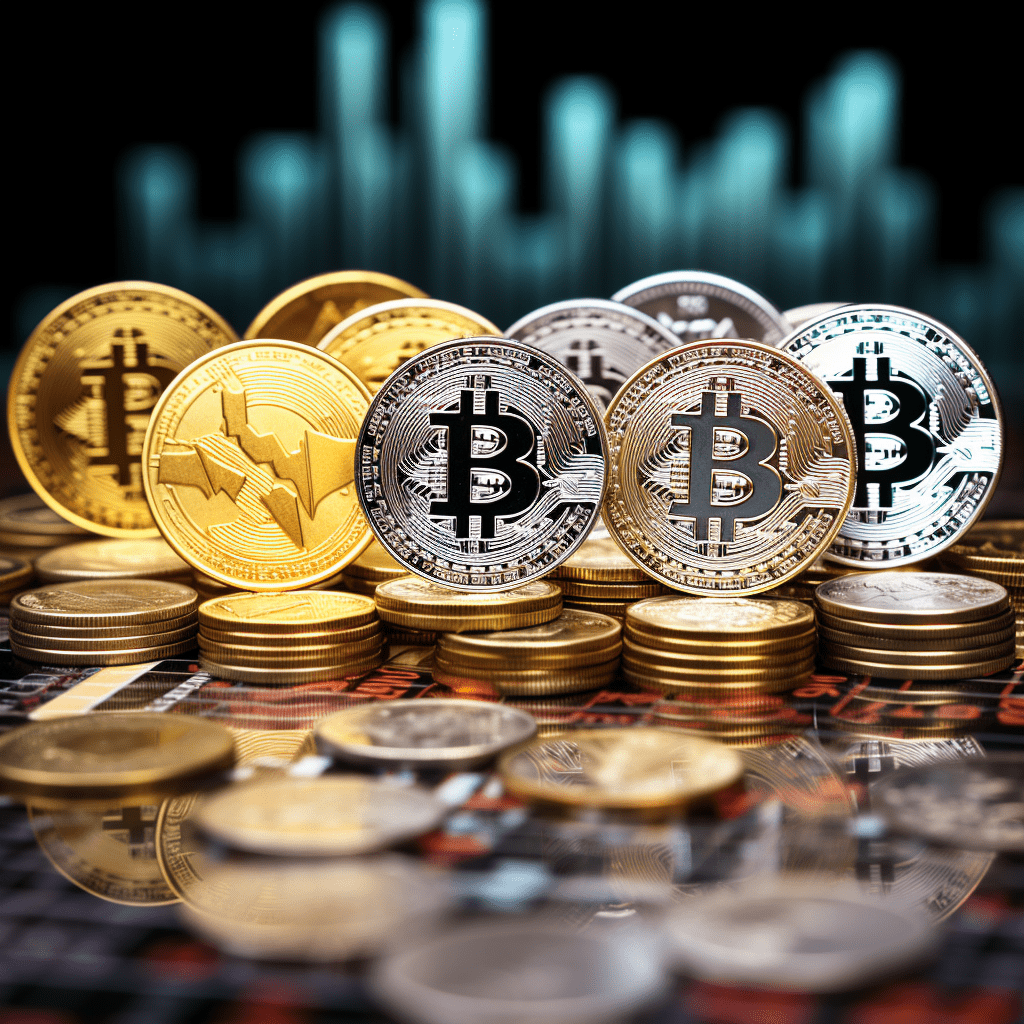Introduction: The Evolution of Money
Money, a fundamental aspect of human civilization, has continuously evolved throughout history. In recent years, we’ve witnessed a profound transformation in the concept of money. This transformation is primarily attributed to the emergence of virtual currencies, most notably cryptocurrencies like Bitcoin and Ethereum. These digital innovations have disrupted traditional notions of money and ushered in a new era of financial possibilities. In this extensive comparative analysis, we’ll embark on a journey to explore the intricate world of virtual currencies and traditional money. We will dissect their fundamental differences, examine their surprising similarities, and dive deep into the profound impact they have on our daily lives.
Part 1: Understanding Traditional Money
1.1 Fiat Currencies: The Backbone of Global Economies
The bedrock of traditional money lies in fiat currencies. These are government-issued currencies that derive their value through a decree or declaration by the issuing authority, typically a government. Fiat currencies have been the primary medium of exchange across the world for centuries. They include the US Dollar, Euro, Japanese Yen, and many others. The strength of these currencies relies on the trust and stability of the issuing government.
1.2 The Banking System: Intermediaries of Fiat
To comprehend the functioning of traditional money, it’s essential to understand the role of the banking system. Banks serve as intermediaries in the financial ecosystem. They facilitate various financial transactions, including deposits, withdrawals, transfers, and lending. Banks also play a crucial role in the creation of money through the process of fractional reserve banking, where they can lend out a portion of the funds deposited by customers, thereby increasing the money supply in the economy.
1.3 Central Banks and Monetary Policy
Central banks are pivotal entities in the world of traditional money. They are responsible for regulating the money supply, interest rates, and, to some extent, the overall economic stability of a country. Central banks implement monetary policy tools, such as adjusting interest rates and open market operations, to influence economic conditions. For instance, lowering interest rates can stimulate borrowing and spending, while raising them can combat inflation.
Part 2: The Rise of Virtual Currencies
2.1 The Birth of Bitcoin: Pioneering Cryptocurrency
The genesis of virtual currencies, especially cryptocurrencies, can be traced back to the invention of Bitcoin in 2008 by an enigmatic figure known as Satoshi Nakamoto. Bitcoin introduced the world to the concept of decentralized digital currency. Unlike traditional fiat currencies, Bitcoin operates on a decentralized network of computers, and its creation and transaction validation are governed by a consensus mechanism known as proof-of-work (PoW). This means that no central authority, like a government or central bank, controls Bitcoin. Instead, its integrity is maintained by a network of participants (nodes) through cryptographic techniques.
2.2 Beyond Bitcoin: A Diverse Crypto Landscape
The success of Bitcoin paved the way for the creation of thousands of other cryptocurrencies, each with its unique features and use cases. Ethereum, for example, introduced the concept of smart contracts, enabling programmable, self-executing agreements on the blockchain. Other cryptocurrencies like Ripple (XRP) focus on improving cross-border payments, making them faster and more cost-effective. The cryptocurrency landscape has evolved beyond being just a digital alternative to traditional money; it has become a versatile platform for innovation and financial experimentation.
Part 3: Comparative Analysis
3.1 Ownership and Control
One of the fundamental distinctions between traditional money and virtual currencies is the concept of ownership and control. In the traditional money system, fiat currencies are centrally issued and controlled by governments and central banks. This centralization gives these entities immense power to influence the money supply, interest rates, and economic policies. However, it also means that users of traditional money rely on these authorities to maintain the stability and integrity of the currency.
On the contrary, virtual currencies, especially cryptocurrencies, operate on decentralized networks. Ownership of virtual currency tokens is not tied to any central authority. Instead, individuals who hold the private keys to their digital wallets have full control over their virtual currency holdings. This decentralization aspect empowers users by eliminating the need for intermediaries and puts the control of one’s finances directly into the hands of the individual.
3.2 Anonymity and Privacy
Privacy and anonymity in financial transactions have become a significant point of distinction between traditional money and virtual currencies. In the traditional financial system, most transactions are conducted through banks, which are subject to extensive regulations requiring the collection and reporting of customer information. As a result, many fiat currency transactions lack privacy, with banks and governments having access to transaction data.
Virtual currencies, however, offer a degree of anonymity and privacy that is often unmatched in traditional financial systems. Cryptocurrency transactions are pseudonymous, meaning that while the transaction details are recorded on the blockchain, the identities of the transacting parties are represented by cryptographic addresses, not personal information. This anonymity aspect has both positive and negative implications. On one hand, it enhances privacy and security. On the other hand, it has raised concerns about its potential misuse in illegal activities.
3.3 Security and Fraud Prevention
The security mechanisms in place for traditional money and virtual currencies differ significantly due to their underlying technologies. In the traditional financial system, security relies heavily on physical measures, such as bank vaults, security personnel, and fraud detection systems. Banks and
financial institutions employ sophisticated tools to monitor transactions for signs of fraudulent activity, aiming to protect both customers and the financial system as a whole.
Virtual currencies, particularly cryptocurrencies, employ robust cryptographic techniques for security. Transactions on the blockchain are secured through complex mathematical algorithms, making it extremely difficult for unauthorized parties to alter transaction data. Additionally, the decentralized nature of blockchain technology means that there is no central point of failure, making it inherently more secure against certain types of attacks.

3.4 Transaction Speed and Cost
Transaction speed and cost are areas where virtual currencies, especially cryptocurrencies, often outperform traditional money, particularly in specific use cases. In the traditional banking system, cross-border transactions can be slow and costly, involving multiple intermediary banks and currency conversion fees. The process can take several days to complete, leading to delays in international business and personal transactions.
Cryptocurrency transactions, on the other hand, can be significantly faster and cost-effective, particularly for cross-border transfers. Transactions on blockchain networks can occur in a matter of minutes, regardless of geographical boundaries. This efficiency is particularly advantageous for international remittances, where individuals can send funds to family members or business partners abroad without the need for costly intermediaries.
3.5 Inflation and Supply
Inflation, or the increase in the general price level of goods and services over time, is a critical consideration when comparing traditional money to virtual currencies. Fiat currencies are susceptible to inflation, primarily because central banks can increase the money supply by printing additional currency or adjusting interest rates. Inflation can erode the purchasing power of a fiat currency over time, which can have significant economic implications.
Many cryptocurrencies, including Bitcoin, have implemented mechanisms to counteract inflation. For instance, Bitcoin has a capped supply of 21 million coins, meaning that there will only ever be 21 million Bitcoins in existence. This scarcity aspect has led some to view Bitcoin as a potential hedge against inflation, similar to gold. However, it’s important to note that not all cryptocurrencies have capped supplies, and the inflation dynamics can vary widely within the crypto space.
3.6 Accessibility and Financial Inclusion
Accessibility to financial services is a crucial consideration, particularly in the context of financial inclusion. Traditional banking systems require individuals to have access to physical bank branches, government-issued identification, and a credit history to open and operate bank accounts. This exclusionary aspect leaves a significant portion of the global population without access to essential financial services.
Virtual currencies, with their decentralized and borderless nature, have the potential to address issues of financial inclusion. Individuals who have internet access and a digital device can create cryptocurrency wallets and participate in the global economy. This accessibility is particularly valuable in regions with limited access to traditional banking infrastructure, allowing individuals to store, send, and receive funds without relying on traditional intermediaries.
Part 4: Real-World Applications
4.1 Remittances and Cross-Border Transactions
One of the most tangible benefits of virtual currencies, particularly cryptocurrencies, is their efficiency in facilitating cross-border transactions and remittances. Traditional methods of sending money across borders often involve multiple intermediaries, currency conversion fees, and lengthy processing times. This can result in significant costs and delays, particularly for individuals who rely on remittances from family members working in other countries.
Virtual currencies offer a solution to this challenge. With cryptocurrencies, individuals can send funds directly to recipients in other countries, bypassing the traditional banking system. This not only reduces transaction costs but also accelerates the speed at which funds are received. This has significant implications for individuals and businesses engaged in international trade and finance.
4.2 Smart Contracts and Decentralized Finance (DeFi)
Virtual currencies have given rise to innovative applications beyond simple transactions. Ethereum, in particular, introduced the concept of smart contracts, which are self-executing agreements with the terms of the contract directly written into code. These contracts automatically execute when predefined conditions are met, eliminating the need for intermediaries.
Smart contracts have found applications in various industries, including real estate, insurance, and supply chain management. They have the potential to streamline complex processes and reduce the risk of contract disputes. Furthermore, the rise of decentralized finance (DeFi) platforms, built on blockchain technology, has opened up new avenues for borrowing, lending, and trading digital assets without the need for traditional financial intermediaries.
4.3 Challenges and Regulatory Landscape
While virtual currencies offer numerous advantages, they are not without their challenges and complexities. One of the most significant challenges is the evolving regulatory landscape. Governments and regulatory bodies worldwide are actively developing and updating regulations related to virtual currencies. These regulations aim to address concerns such as consumer protection, anti-money laundering (AML), and the prevention of illicit activities.
The regulatory environment for virtual currencies varies from one country to another, leading to a patchwork of regulations and compliance requirements. Cryptocurrency businesses and users must navigate this landscape, which can be challenging and require a deep understanding of the legal requirements in their respective jurisdictions.
Additionally, the anonymous nature of certain virtual currencies has raised concerns about their potential use in illegal activities, including money laundering and tax evasion. This has prompted regulatory bodies to implement stricter Know Your Customer (KYC) and AML requirements for cryptocurrency exchanges and service providers.
Conclusion: A Dual Financial Universe
In conclusion, the coexistence of virtual currencies and traditional money has given rise to a dual financial universe. Traditional money, backed by governments and central banks, provides stability and a familiar means of exchange. Virtual currencies, on
the other hand, offer innovation, decentralization, and financial empowerment to individuals across the globe.
As technology continues to evolve, the line between these two financial worlds may continue to blur. It’s essential to recognize that the choice between virtual currencies and traditional money often depends on individual preferences, needs, and specific use cases. Both systems have their strengths and weaknesses, and understanding their nuances is crucial for navigating the modern financial landscape.
At CryptopulseHub, we are committed to providing insights into this dynamic financial ecosystem. Stay informed and explore the world of virtual currencies and traditional money with us.







